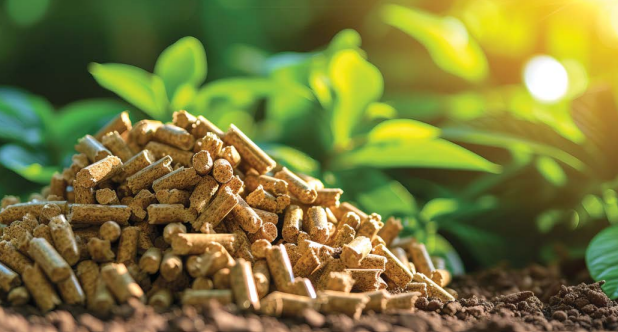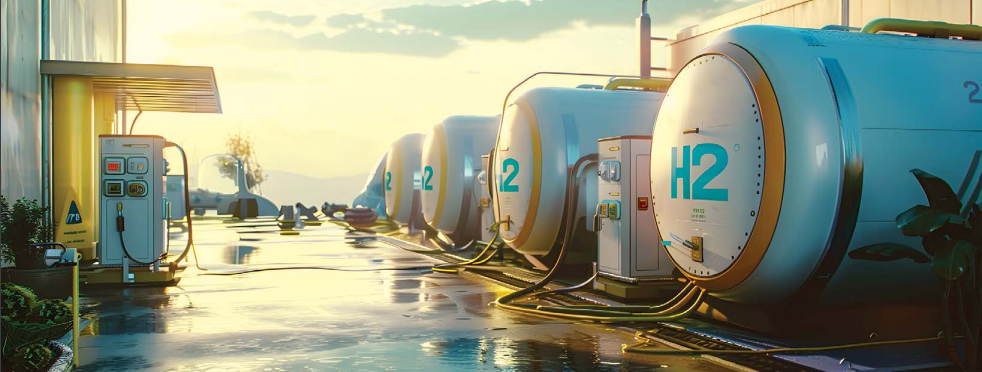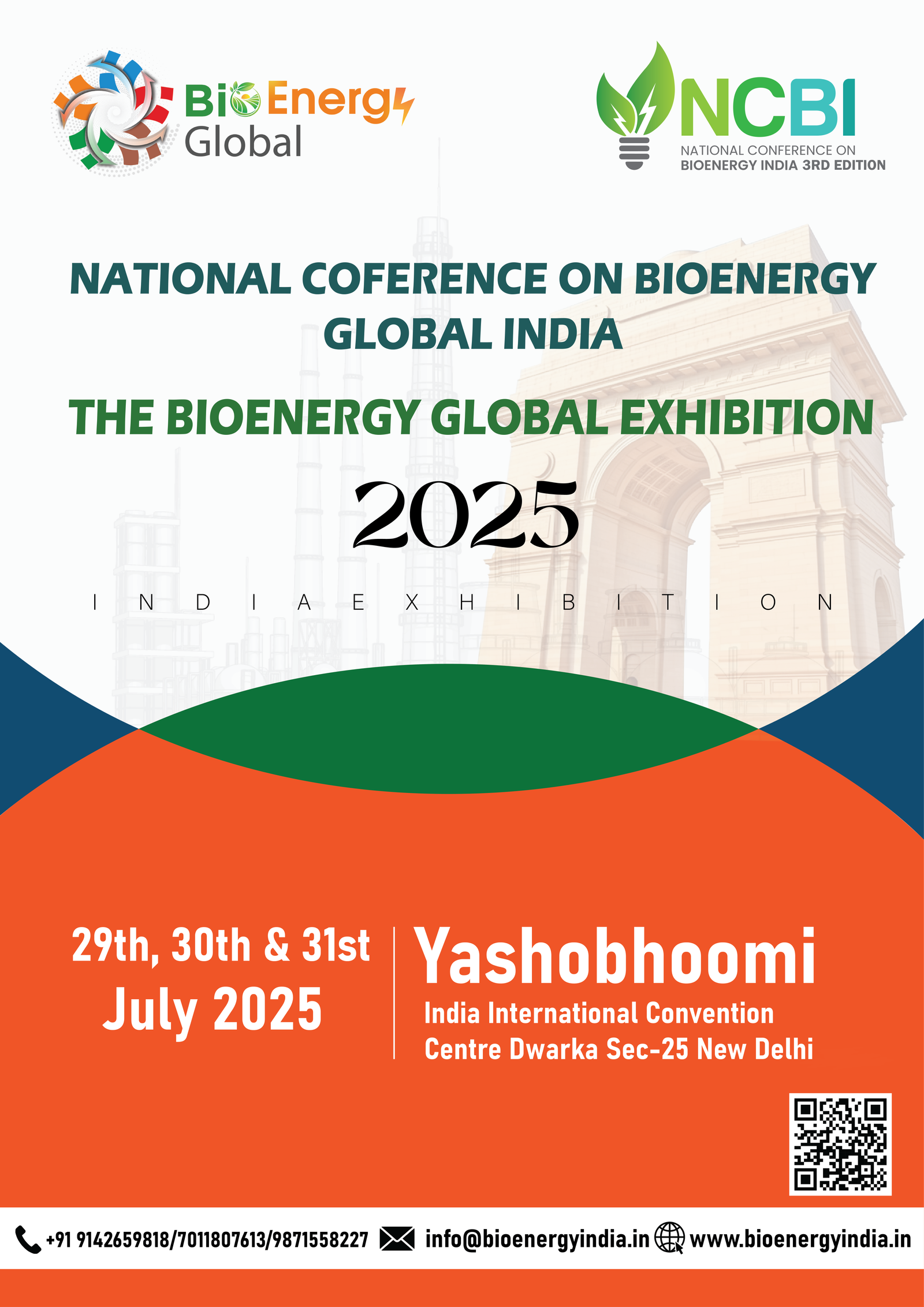In the quest for sustainable solutions to the world’s energy and environmental challenges, few voices resonate as powerfully as that of Prof. Bruce Dale. As a distinguished Professor Emeritus in the Department of Chemical Engineering and Materials Science at Michigan State University and a Fellow of both the American Institute of Chemical Engineers and the American Institute of Medical and Biological Engineers, Dale’s insights into renewable energy and bio-based technologies are invaluable. In this exclusive interview conducted by Balram Gupta, Editor-in-Chief of Bioenergy Times, Prof. Dale shares his evolving perspectives on environmental sustainability, the role of bioenergy in rural economies, and the future of renewable energy research, offering a compelling vision for how we can address global challenges while fostering economic growth and ecological balance.
Question- Professor Dale, you have been a leading figure in the fields of biochemical engineering, biomass conversion, bio-based industrial products, value-added agriculture, industrial ecology, and ecological engineering. Can you share what first sparked your interest in these areas and how your focus has evolved over the years?
Answer-My dad was a mining engineer in the Robinson Mining District in eastern Nevada in the United States. When I was about 12 years old (that was in 1962), he gathered our family around the kitchen table and told us that the copper mine where he worked only had about seven years more of recoverable ore, and that we needed to move. I loved my little town and didn’t want to go. But we did. Two years later we moved to another mining town, that one being in Arizona. Dad was right. About 8 years after we left Nevada, that mine closed and is still closed. I got suspicious then of the mining industry and have been ever since. Every mining boom town eventually converts into a ghost town, and that is what happened to the towns in Nevada and Arizona where I grew up. They eventually became ‘ghost towns.’ It is sad to visit these once vibrant communities now and see how far they have fallen, both socially and economically. It is truly depressing. Fast forward 10 years. I was about to graduate with a BS degree in chemical engineering when the US experienced its first oil embargo (1973). The major employer of chemical engineers was the petroleum refining industry. I realised then that petroleum extraction was actually mining, and that I didn’t like mining. Mine oil (drill it), burn it and it is gone forever (in human time scales). The oil industry has created more than its share of ghost towns around the world in the 160 or so years of its existence. I decided then that I wanted to work with renewable energy resources, and not with extracted or mined resources. So, I went on to do graduate study in renewable energy, and have been working in that field ever since. It has been wonderfully satisfying.

Question- How does the use of renewable energy contribute to environmental sustainability beyond just reducing greenhouse gas emissions? Can you discuss the broader ecological, economical and societal benefits associated with renewable energy adoption?
Answer-Well, not all ‘renewable energy’ contribute equally to environmental sustainability. For example, there are serious environmental concerns about the manufacture and disposal of solar panels. Whatever was growing before on the land, whatever animal and plant communities were there before solar ‘farms’ were built, now have
a much harder time existing. Wind farms kill a lot of birds, particularly the higher altitude, bigger and rarer avian species. Offshore wind farms on off the coast of the eastern US, are implicated in the death of whales, particularly the western Atlantic right whale and other marine life. Furthermore, and this is critical, neither wind nor solar are truly renewable, they are ‘rebuildable’ but they are not actually ‘renewable.’ After a certain number of years, we will have to rebuild solar panels and wind towers. I am not sure how that
can happen without another massive influx of public funds like theone that built the first wave of solar and wind farms. Where is that money coming from in a world that is already massively indebted? While I do think that solar and wind have their place in our portfolio of energy solutions, I just don’t see them supplying more than a small fraction of the world’s energy needs.
And I just don’t see solar or wind energy doing much to contribute to community formation, especially in the rural areas that are not prospering and have been largely bypassed during the generally increased prosperity of the recent decades. I much prefer biobased renewable energy, where green plants form the basis of energy capture system. Done properly,
biofuels, especially cellulosic biofuels, can regenerate soils and help build stable, prosperous rural communities.
Question- Can you discuss how the development of renewable biological resources, such as bioenergy, can support rural economies and enhance waste management ? What are the key factors that determine whether these benefits are being realised ?
Answer-An important key is that the processing of the biological resource to the final fuel be done locally as much as possible. I call these local biomass process facilities as ‘depots.’ It is the value added to these biological resources by local processing depots that will help build prosperous local
communities. If rural areas simply ‘export’ their raw bioresource commodities to distant locations for processing, then much of the prosperity they might have otherwise generated will be lost. It is also critical to realize that, as much as possible, we only want to export carbon and hydrogen atoms as potential fuels or feedstocks for producing the final hydrocarbon fuels. All other atoms should be recycled locally to the soil to build soil fertility Depots can be tailored to do that. For example, anaerobic digestion of plant
material produces biomethane, carbon
dioxide and a digestate slurry, which
contain the mineral nutrients plus stabilized carbon that builds soil fertility and sequesters stabilized carbon in the soil. When large numbers of these
depots combine their outputs, then the
commodities produced can be aggregated and processed to hydrocarbon
fuels at a scale that is competitive with
petroleum refineries. Economies of
scale are critical in producing fuels.
In fact, existing petroleum refineries can be adapted over time to receive
such bioresouce commodities, either
as solids, liquids or gases. For example, biomethane could be processed to
liquid hydrocarbon fuels just as fossil
methane is currently being processed
to conventional fuels (gasoline, diesel,
etc.) at the 250,000 barrel per day (oil
equivalent) scale in Qatar.
Done properly, using known principles, these depots and their associated farms and livestock facilities can
become truly regenerative agro-energy systems. If I had another career
to enjoy, I would focus on these truly
regenerative agro-energy systems.
Effective waste management relies
on the same principles of local use…
we cannot afford to move wastes to
long distances. So, such wastes should
be used/recycled locally. For organic
wastes, anaerobic digestion is a proven tool for extracting energy and producing valuable co-products.
Question- What according to you are the most urgent actions needed to effectively mitigate climate change? How can we ensure that these actions are economically feasible?
Answer-We must realize that the use of energy creates wealth. Every single economic activity requires energy — the more energy available the more wealth that can be generated. The reason the world is so much wealthier (overall) than it was 200 plus years ago when the Industrial Revolution Rich nations and rich communities should lead the way in using biological carbon sources to produce drop in substitutes for liquid hydrocarbons, leaving more fossil hydrocarbons for
poorer countries and regions to use until they can also become more wealthy, more prosperous themselves, and make the switch to truly renewable liquid hydrocarbon fuel the value added to these biological resources by local processing depots that will help build prosperous local
communities. If rural areas simply
‘export’ their raw bioresource commodities to distant locations for processing, then much of the prosperity
they might have otherwise generated will be lost. It is also critical to realize that,
as much as possible, we only want to
export carbon and hydrogen atoms as
potential fuels or feedstocks for producing the final hydrocarbon fuels. All other atoms should be recycled locally to the soil to build soil fertility. Face-to-Face
BIOENERGY TIMES | October-November 2024 25 began, is because we have learned to use the energy stored in fossil carbon (first coal, then oil and natural gas) to help produce vastly more goods and
services. Thus, poor communities/poor
countries need to use more energy,
not less, to lift themselves from poverty. The most valuable, the most energy rich, storable and easily transportable fuels are liquid hydrocarbon fuels. These liquid hydrocarbon fuels are truly remarkable and unique intheir energy density and ease of storage and transport. Nothing else comes close. For this reason, among others, I believe we should be trying to replace fossil derived hydrocarbon fuels with carbon/hydrogen from biological
resources, rather than trying to electrify the entire economy with solar
and wind. Fortunately, ‘drop in’ substitutes
for liquid fossil hydrocarbons can be made from biocarbon sources by known processing technology at costs that are likely to be competitive at current crude oil prices (around $80 US per barrel). By ‘drop in’ fuels I mean fuels made from plant-derived carbon, which are chemically
and functionally identical to the liquid petroleum hydrocarbon fuels they could be replacing. This is already happening in
the US as ethanol produced by fermentation of biological resources is being upgraded commercially to produce sustainable aviation fuels— drop in jet fuel replacements. In Italy, farmer-led groups are taking biomethane produced from animal manures and upgrading it by known processing technologies to produce
liquified natural gas, bioLNG; an ultra clean drop in substitute for diesel fuel. I think these and other such technologies can and should spread as rapidly as possible. Rich nations and rich communities should lead the way in using biological carbon sources to produce drop in substitutes for liquid hydrocarbons, leaving more fossil hydrocarbons for poorer countries and regions to use until they can also become more wealthy, more prosperous themselves, and make the switch to truly renewable liquid hydrocarbon fuel
Question- In your opinion, what key aspects of public-private partnerships can effectively reduce carbon emissions and promote a more sustainable environment?
Answer- In the previous answer, I mentioned producing drop in liquid hydrocarbon fuels. The required processing technology already exists. What we need is to promote the formation of community based, local biomass processing depots, that can provide the commodity biomass feedstocks to much larger biorefineries, which will produce the final liquid hydrocarbon fuels.
Question- Suggest some measures that the governments can implement to give a fillip to the process of transition to renewable energy from conventional energy. How can political interventions be tailored to support and accelerate this transition?
Answer-Focus on local biomass depots
to produce feedstocks that can be
upgraded to liquid hydrocarbon fuels.
Anaerobic digestion is one technology that could be used in such depots Another isbiomass liquefaction with
recycle of carbon biochar to the soil.
Yet another is biomass pretreatment
to provide solid, easy to transport pellets for use either as enhanced animal
feeds or feedstocks, for biofuel production by fermentation or catalytic liquefaction.
Question- What strategies do you recommend for decreasing reliance on fossil fuels? How can policymakers and industry leaders work together to overcome the barriers to this shift?
Answer-Use more plug-in hybrid and
hybrid vehicles whenever possible,
but do not insist on all electric
vehicles. The lithium and other
elements required to make one allelectric vehicle can instead be used
to make ten hybrid vehicles that
will run cleaner and be much less
expensive than all electric vehicles.
And I think the development and
deployment of biomass processing
depots is critically needed to provide
commodity biomass materials that
can be upgraded to drop in liquid
hydrocarbon fuels.
Question- Looking ahead, what are the most exciting research areas in bioenergy that you believe will have a transformative impact on both the energy sector and environmental sustainability?
Answer-It is understanding how farm/
rural based depots might be
integrated with local economies to
produce liquid hydrocarbon biofuels
and biofuel feedstocks that are
truly sustainable and which would
fit into existing systems for storing,
transporting and using liquid
hydrocarbon fuels.
Question- From your perspective, what are the effective environmental policies
currently in place for reducing greenhouse gas emissions? Cite some specific examples where policies have successfully driven significant environmental improvements ?
Answer-I regret to say ‘none’ or almost
none. All the current environmental policies of which I am aware require
large subsidies from public funds.
These subsidies have been provided
by accumulating mountains of debt…
clearly an unsustainable proposition.
I point to one recent example. Germany has supposedly led the way in
a transition to ‘green energy.’ When
supplies of Russian natural gas were
greatly reduced because of the conflict in Ukraine, Germany’s vast
investment in solar and wind power proved unable to meet the needs
of Germany’s people and industries.
So Germany restarted its brown coal
power stations and became, almost
overnight, one of the biggest carbon
dioxide emitters on the planet.
“Contributing to a Sustainable Future– For his contributions to sustainable bioenergy, Prof. Dale has been elected a Fellow of the American Institute of Chemical Engineers and the American Institute of Medical and Biological Engineers. A prolific inventor with 62 patents, he is also a member of the National Academy of Inventors. With hundreds of publications and his intellectual leadership as Founding Editor of the journal titled Biofuels, Bioproducts and Bioenergy, Professor Dale is globally recognized as a pioneer in his field.”
Question- Looking at the future of bioenergy, what do you think will be the most significant areas of research and development over the next decade?
Answer-My bioenergy colleagues and
I have been involved primarily in
‘basic’ research for most of my 45 year
plus career. We have made some notable advances but large-scale implementation of bioenergy has thus far mostly eluded us. I think this is due in large part to the fact that our ‘advances’ do not fit well within existing energy systems. It is unlikely almost to the point of impossibility that we will completely replace our existing energy production, distribution and storage systems with some ‘novel’ energy source. Hence my skepticism about
solar and wind ever being able to supply more than a relatively small fraction of our energy needs. So significant R&D areas will be those that leverage existing energy
systems to the maximum extent possible to more rapidly scale up and implement truly renewable energy solutions. This is what I am trying to do now in my “retirement” years. I want to help research, promote and establish rural biomass processing depots embedded in regenerative agro-energy systems, which
can provide commodity bioresources for upgrading to liquid hydrocarbon fuels.
Question- Finally, what advice would you give to young researchers and professionals who are interested in pursuing a career in bioenergy and related fields?
Answer- Everything is connected. Learn to think in terms of systems. Acquire the intellectual tools required to understand the systems of interest to you. Then focus on parts of the overall system that excite you both emotionally and intellectually and have true potential to be economically viable and environmentally sustainable.




